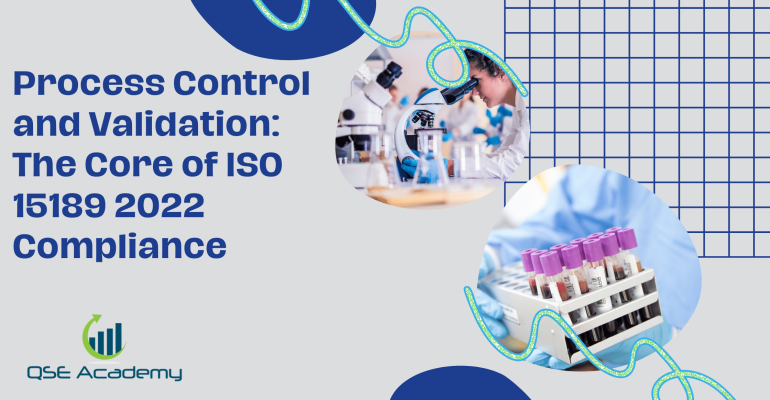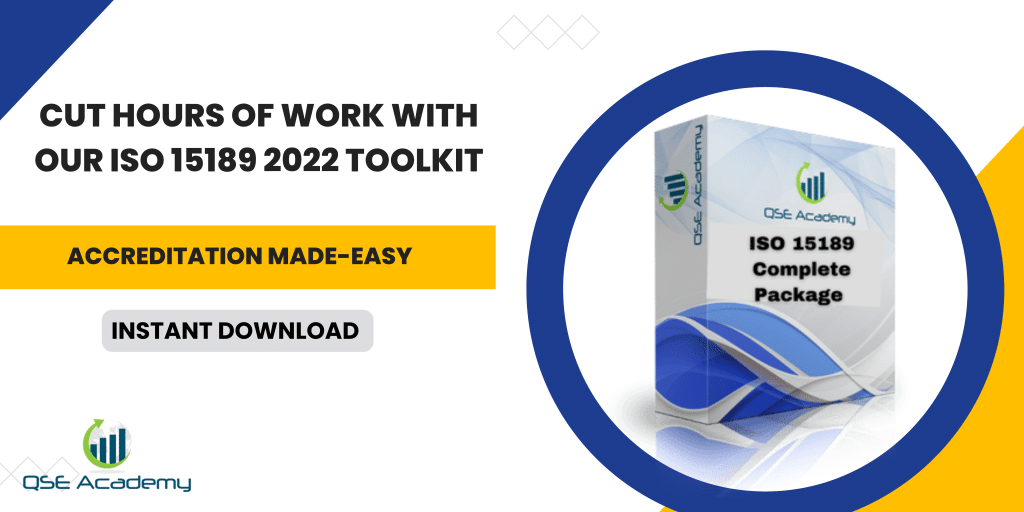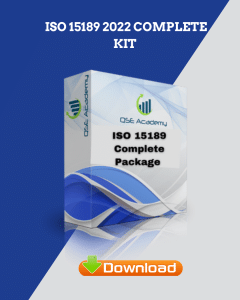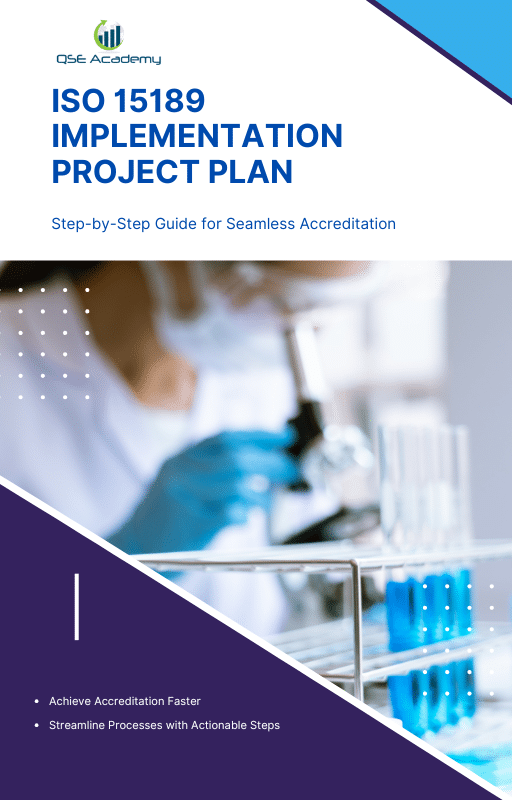Process Control and Validation: The Core of ISO 15189 2022 Compliance
Last Updated on October 22, 2025 by Hafsa J.
Process Control and Validation: The Core of ISO 15189 2022 Compliance
Let’s be real—when most labs think about ISO 15189:2022, their focus immediately goes to equipment, staff training, or result reporting. But here’s what I’ve noticed after helping dozens of labs get accredited: if your processes aren’t controlled and your methods aren’t validated, you’re walking into trouble—even if everything else looks good on paper.
In my experience, this is where even the most well-intentioned labs slip. They either overcomplicate validation or ignore it until it’s too late. And honestly, I get it. The standard’s language around process control can feel vague, and validation sounds technical enough to scare people off. But ISO 15189:2022 is crystal clear about one thing—you need to prove that your lab’s processes consistently produce reliable results.
That’s exactly what we’re going to break down in this post.
You’ll walk away knowing what ISO means by “process control” and “validation,” why they matter more than ever in the 2022 version, and how to apply them in a way that’s not just audit-ready—but makes your lab more efficient and confident in its results.
Ready to simplify this? Let’s dive in.
Understanding Process Control in ISO 15189:2022
Here’s what I’ve seen again and again—labs confuse “process control” with “quality control,” and while they’re related, they’re not the same thing. Quality control is about checking if something works. Process control is about making sure it works the same way, every time, from start to finish.
So, what exactly is process control?
In ISO 15189:2022, process control refers to how you manage every step of the testing process to make sure it’s done right—not just once, but consistently. That includes:
-
Pre-analytical steps like sample collection and transport,
-
Analytical steps like instrument setup and method execution,
-
And post-analytical steps like reporting and storage.
If any of these go sideways—even just a little—patient safety is at risk. That’s why ISO now places so much emphasis on process control: it’s your lab’s way of proving it’s not just reacting to problems, but actively preventing them.
Real example from the field
I worked with a small infectious disease lab that kept getting inconsistent PCR results. Their QC was technically “passing,” but results were fluctuating. We mapped the entire process and discovered that delays in sample thawing were affecting integrity before testing even started. Once we adjusted the process and added a timer checkpoint, their variability dropped by more than 60%. That’s process control in action.
Why it matters
When your processes are clearly mapped, monitored, and controlled, you reduce variability, improve traceability, and make your audits a whole lot easier. Plus, your team feels more confident because expectations are consistent—not changing from shift to shift.
Designing Process Maps That Actually Work
Let’s be honest—most process maps end up as dusty flowcharts pinned to a wall or buried in a binder no one opens. But when they’re done right, they’re one of the most useful tools in your ISO 15189 toolkit.
What makes a process map actually useful?
In my experience, a good process map does three things:
-
Shows the entire path—from start to finish—of a critical lab process.
-
Identifies key decision points (like “Does the sample meet criteria?”).
-
Connects directly to controls—so you know where to monitor and measure performance.
If your process map doesn’t help you manage risk or improve consistency, it’s just decoration.
Real story from a virology lab
I once helped a virology lab that was dealing with turnaround delays for viral load testing. Staff blamed the instruments. But when we mapped out the process, it turned out the delay was happening way earlier—at the sample sorting stage. The map made that painfully obvious. We added a barcode scanning step and a timestamp, and within a week, delays were cut in half. No instrument replacement needed.
Keep your maps simple and specific
-
Don’t include every minor task—focus on key activities and checkpoints.
-
Make it visual—boxes, arrows, decision diamonds.
-
Tie each step to an SOP or policy if it exists.
And most importantly? Use them. Don’t just build them for the audit. Use process maps during onboarding, refresher training, and even internal audits. That’s when they become real tools—not just paperwork.
Validation vs. Verification: What’s the Difference?
This one trips up a lot of labs—understandably so. ISO 15189:2022 uses both terms, but it doesn’t always spell out the difference in plain language. So let’s break it down the way I explain it during staff training.
The simplest way to remember it:
-
Validation = proving something works in your lab (especially when it’s new or different).
-
Verification = confirming that a standard method works as expected in your lab.
Think of validation as a deeper dive. You’re not just checking—it’s about proving, with data, that a method, instrument, or software performs reliably under your exact conditions.
When do you validate?
-
When you use a lab-developed method
-
When you modify a standard method
-
When the method is non-routine or high-risk
-
When you implement new equipment or software that affects results
When is verification enough?
-
When you’re using a commercial, standardized method as-is
-
When you’re introducing new staff to a validated system (you verify their individual performance, not the method)
Here’s a real-world case
A genetics lab I worked with introduced a new real-time PCR kit for viral genotyping. It was CE-marked and validated by the manufacturer. But since they adjusted the extraction volume and used a different thermal cycler, they couldn’t just rely on the manufacturer’s validation. We created a simplified in-house validation plan focused on precision, detection limits, and reproducibility under their actual workflow—and it passed audit with no questions asked.
Had they skipped that? They would’ve been flagged hard.
Bottom line?
If you’re changing the conditions, adapting the method, or doing something novel, you validate. If you’re using it as intended, you verify.
Documenting Validation Activities for Audit Readiness
Let’s be real—most labs don’t fail audits because they skipped validation. They fail because they can’t prove they did it right. ISO 15189:2022 doesn’t just want you to validate processes—it wants that validation to be clear, traceable, and reviewable.
So, what should validation documentation actually include?
Here’s the checklist I use with my clients:
-
A clear validation protocol: what you’re testing, how, and why.
-
Acceptance criteria: how you’ll decide if the method or process “passed.”
-
Raw data and results: yes, even if it’s handwritten (as long as it’s legible and traceable).
-
A final summary report: what was done, what was found, and the conclusion.
-
Sign-off by someone authorized (usually your lab manager or QA lead).
If any of those are missing, it’s a gap.
How to organize it (without going crazy)
Create a validation file or binder for each method or major process:
-
Include a table of contents.
-
Number each page or section clearly.
-
Keep everything in order—protocol, raw data, analysis, report, approvals.
Or if you’re paperless, keep digital folders neatly labeled and backed up. Bonus points if you can pull up files in under five minutes during an audit.
Field-tested tip
A histopathology lab I worked with had great validation practices—solid data, good protocols—but their files were scattered across three computers and a technician’s email. We cleaned that up, built a shared validation library on their internal drive, and linked each record to the lab’s master equipment and method list. The auditor said it was “one of the most organized validation archives” they’d seen. And that came from someone who had audited over 100 labs.
Final word?
Validation is only as strong as the paper (or digital trail) behind it. If it’s not documented, ISO treats it like it never happened.
Monitoring and Controlling Processes Over Time
Doing a validation once and filing it away isn’t enough. ISO 15189:2022 is all about ongoing control. That means once a process is validated, you’ve got to keep an eye on it—make sure it keeps performing the way it should.
What does that look like in practice?
Think of it like this: validation proves the process can work. Monitoring proves it still works.
Here are the common tools I recommend (and use myself with clients):
-
Internal quality control (IQC): Daily or batch-level checks tied to critical steps.
-
Trend analysis: Looking at data over time—not just pass/fail, but “Are we drifting?”
-
Incident tracking: Logging and reviewing process-related errors or deviations.
-
Process audits: Internal reviews of how a process is being followed—not just whether results are accurate.
Example from the field
A pathology lab I worked with noticed a slow creep in turnaround times for biopsy reports. The test results were fine—but patients were waiting longer than promised. By plotting turnaround data monthly, we spotted a trend: new residents were taking longer to input data into the LIS. That triggered a workflow update and short training—and turnaround times bounced back within a month.
That’s monitoring. That’s control.
Connect your process controls to KPIs
Make sure you’re tracking performance in a way that management can see. Tie process metrics—like error rates, retests, or delays—into your quality indicators and management review process. That keeps process control relevant at every level of the lab.
Simple tip
Use a spreadsheet or dashboard to track “red flag” areas. If something spikes—like repeat testing or delayed reports—you’ve got a trigger for immediate review. ISO loves this kind of proactive thinking.
Integrating Process Control into Nonconformity and Risk Management
Here’s the truth—no matter how good your process control is, things will still go wrong from time to time. ISO 15189:2022 doesn’t expect perfection. What it expects is that you catch problems early, understand why they happened, and use that insight to prevent them in the future.
That’s where process control and risk management connect.
How it works in real life
Let’s say you start seeing a spike in sample rejections from your hematology section. You’ve got controls in place, but clearly, something’s slipping through. This is your cue to:
-
Log it as a nonconformity.
-
Review the affected process step-by-step.
-
Assess the risk (impact on patient care, recurrence potential).
-
Update your process control plan or training as needed.
This isn’t just a compliance exercise—it’s how labs actually get better.
Client example
A molecular lab I supported had an incident where test reports were occasionally getting printed with mismatched patient IDs. That’s a big deal. We traced it to an LIS update that changed how samples were linked to reports. The fix? Re-validate the software post-update (which hadn’t been done), add a verification step, and flag the risk in their risk register. That issue hasn’t come back since.
Make it part of your quality loop
Every time you log a nonconformity, ask:
-
Did a process fail, or was it followed incorrectly?
-
Do we need to change the process itself—or reinforce it with better training or tools?
-
What’s the risk if this keeps happening?
Then loop that insight back into your process maps, SOPs, and monitoring plans.
Bottom line?
Strong labs use process data to spot weak spots before they become serious problems. That’s the difference between checking a box and building real, resilient quality.
Pro Tips & Expert Insights: From the Field to Your Lab
Pro Tip 1: Build your process maps with the end users, not just management
I’ve seen process maps that look great in a meeting but fall apart on the bench. Always include the actual techs and analysts—they know where the real gaps and workarounds are.
Pro Tip 2: Validate with your actual conditions, not ideal ones
If your method works great on a pristine training sample but fails under real lab stress (rush hour, mixed staff, borderline samples), your validation didn’t do its job. ISO expects you to simulate real-life usage.
Pro Tip 3: Create a validation summary tracker
Keep a simple master log of all validations—date, method, who approved it, status. Auditors love this, and it keeps you from scrambling through folders when questions come up.
Pro Tip 4: Link your risk register to your process control plan
If you’ve flagged a process as high-risk, it should show up in your monitoring priorities. Otherwise, you’ll get hit for not aligning risk management with actual quality activities.
Pro Tip 5: Use failed validations as learning tools—not red flags
One lab I worked with had three method validations “fail” in a row. Instead of hiding them, they documented what didn’t work and adjusted their protocols. The auditor complimented their transparency and problem-solving approach.
Common Mistakes and FAQs: What Labs Get Wrong—and How to Get It Right
Common Mistakes to Avoid
Mistake 1: Treating process control like a formality
Too many labs build a great SOP, but no one actually follows it—or even knows it exists. Process control isn’t about paperwork. It’s about making sure the right things happen, every time, in real life.
Mistake 2: Skipping validation because “the manufacturer already did it”
I hear this a lot. But ISO 15189:2022 doesn’t accept that excuse. If you’re using the method in your lab, under your conditions, you need to prove it works—for you.
Mistake 3: Only reacting to problems after they’ve caused issues
If you’re not reviewing trends or looking for early signs of process drift, you’re missing the whole point of control. You want to catch issues before they affect patient care—not after.
Mistake 4: Confusing calibration, verification, and validation
These terms get tossed around interchangeably, but they mean very different things. Mixing them up in your documentation is a quick way to confuse your team—and your auditor.
Frequently Asked Questions
Q: Do I need to validate everything?
No—but you do need to validate any non-standard methods, modifications, or high-risk processes. If it’s something new or customized, validation is required. Standard methods just need verification.
Q: What if we don’t have time for full validations?
Start small. Focus on your highest-risk or highest-impact processes first. Use a simple protocol, define clear acceptance criteria, and grow from there. You don’t need to do it all at once—just do it right.
Q: Can a validation fail and still be useful?
Absolutely. In fact, some of the best improvements I’ve seen come from “failed” validations. They show you what’s not working—and that’s a win in ISO’s eyes, as long as you follow up.
Make Process Control Work for You—Not Just the Auditor
If there’s one thing I hope you walk away with, it’s this: process control and validation aren’t just audit requirements—they’re how great labs protect patients and stay reliable.
ISO 15189:2022 doesn’t expect you to be perfect. What it expects is that you know your processes, monitor them thoughtfully, and take action when things drift. That’s what builds trust—not just with auditors, but with your team and the clinicians who rely on your results.
We’ve covered a lot:
-
What process control really means.
-
How to map and monitor your workflows without the fluff.
-
When and how to validate (and what counts as enough).
-
Why good documentation and risk alignment matter more than ever.
So what’s your next move?
Start by reviewing one critical lab process. Pull the map. Check the controls. Look at the last time it was validated. If that feels like a mess—or if it doesn’t exist—start building it now. Keep it simple, keep it focused, and keep it real.
And if you’re stuck? I’ve helped dozens of labs get this right without drowning in red tape. [Reach out for a consult], or [download my free process control starter checklist] to make sure your next audit isn’t a scramble.
You don’t need more paperwork. You need a system that works. Let’s build that—together.
Whether it’s ISO 9001, ISO 22000, or the cosmetics-focused ISO 22716, I’ve spent my career I’m not here to call myself an expert—I prefer “enthusiast” because I truly love what I do. When I’m not writing about standards, you’ll probably find me playing Piano 🎹, connecting with people, or diving into my next big project💫. I’m an engineer specialized in the food and agricultural industry
make ISO standards less intimidating and more approachable for everyone.
turning complex jargon into clear, actionable steps that businesses can actually use.
There’s something incredibly rewarding about helping people navigate food safety and quality management systems
in a way that feels simple, practical, and even enjoyable.
I have a Master’s in QHSE management and over 12 years of experience as a Quality Manager
I’ve helped more than 15 companies implement ISO 9001, ISO 22000, ISO 22716, GMP, and other standards
My clients include food producers, cosmetics manufacturers, laboratories, and service companies
I believe quality systems should be simple, useful, and efficient.













